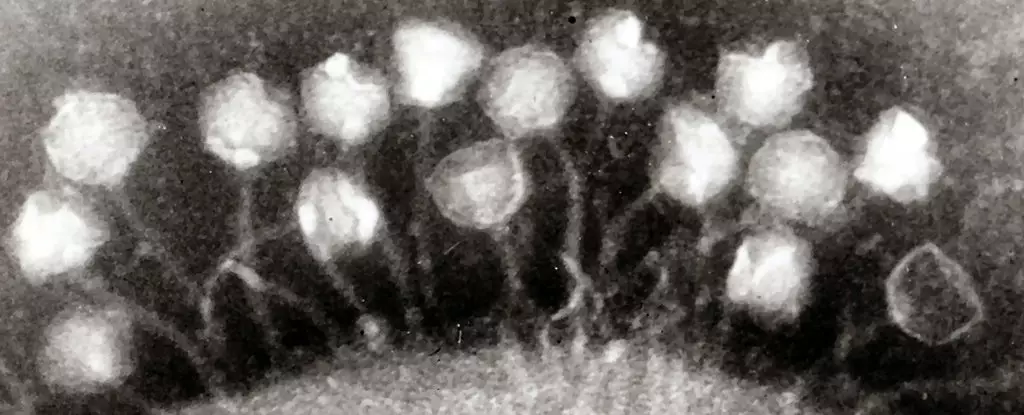In a scene straight out of a horror movie, ancient creatures are emerging from the cold storage of melting permafrost. The melting ice has exposed incredibly preserved extinct megafauna like the woolly rhino and the remains of a giant wolf that are over 40,000 years old. But it’s not just the remains of these creatures that have come back to life. Centuries-old moss and even tiny roundworms that are 42,000 years old have sprung back to life in the warmth of laboratories. These discoveries provide a fascinating glimpse into Earth’s long distant past and give us insights into ancient ecosystems and the environments in which they existed. However, this remarkable event also raises concerns about the potential resurgence of ancient viruses that could pose a threat to modern humans.
As the ice melts, ancient viruses that have been dormant for thousands of years may be released into the environment. A study conducted in 2021 by researchers led by microbiologist Zhi-Ping Zhong from Ohio State University highlighted this concern. The researchers used metagenomics techniques and innovative methods to keep their ice core samples sterilized, enabling them to delve deeper into the frozen history of our planet. By analyzing ice core samples from the Guliya ice cap of the Tibetan Plateau, they were able to identify a treasure trove of unique viruses that are approximately 15,000 years old. These glaciers gradually formed over time, capturing not only dust and gases but also a multitude of viruses. The viruses discovered in these ice core samples potentially represent the microbial communities that existed in the atmosphere during the time of their deposit.
Out of the 33 viruses identified, 28 had never been seen before. These newfound viruses are believed to have thrived in extreme environments and possess genetic signatures that enable them to survive in cold conditions. Comparing their genetic sequences to known viruses, the researchers found that the most abundant viruses were bacteriophages that infect Methylobacterium, bacteria that play a crucial role in the methane cycle within ice. Interestingly, these viruses were most closely related to viruses found in Methylobacterium strains in plant and soil habitats. This finding suggests that the main source of dust deposited on the Guliya ice cap likely originates from the surrounding soils. The team postulated that these frozen viruses likely originate from soil or plants and play a role in facilitating nutrient acquisition for their hosts.
While the discovery of ancient viruses is undoubtedly intriguing, there are more pressing concerns associated with the melting permafrost. One of the greatest dangers lies in the release of massive reserves of sequestered methane and carbon that have been trapped within the ice for thousands of years. Methane is a potent greenhouse gas that can contribute to further climate change, creating a vicious cycle of warming. Consequently, it is crucial to understand not only the viruses but also the environmental changes that occurred in the past and how they might relate to our present climate. Earth scientist Lonnie Thompson emphasizes that there is still much we do not know about viruses and microbes in extreme environments, leaving many important questions unanswered. How will bacteria and viruses respond to climate change? What can we learn from the transition from an ice age to a warm period like the one we are currently experiencing?
The melting permafrost has opened up a portal to the distant past, offering scientists a unique opportunity to study ancient organisms and gain insights into our planet’s history. However, the discovery of ancient viruses in the ice also serves as a stark reminder of the potential risks associated with the melting permafrost. As we continue to unlock the secrets hidden within this frozen world, it is essential that we approach these findings with caution and prioritize further research to understand the implications of these ancient viruses for modern humans. With so much still to be explored, the mystery of the melting permafrost continues to captivate scientists and beckons us to uncover the secrets that lie within Earth’s ancient past.


Leave a Reply